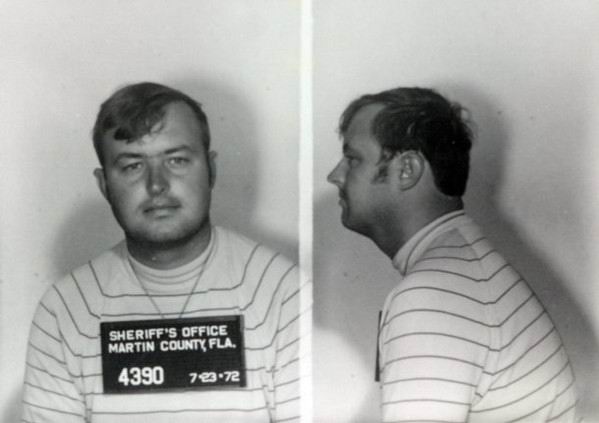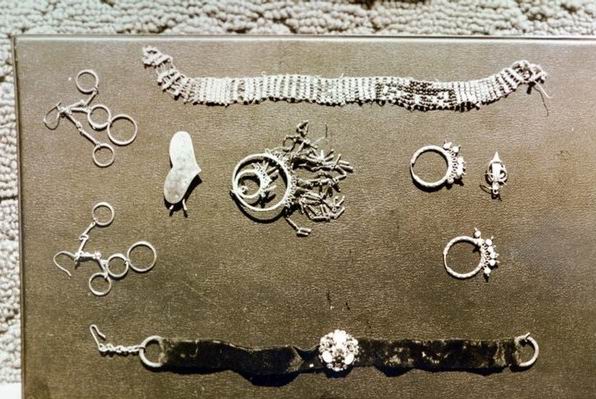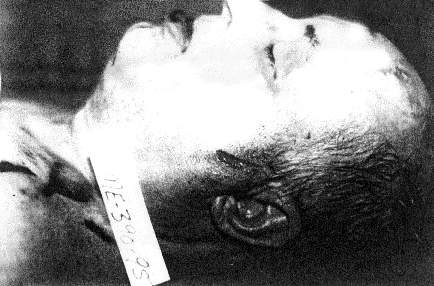
Gerard John Schaefer (Wisconsin, March 25, 1946 – December 3, 1995) was an American serial killer from Florida. He was imprisoned in 1973 for murders he committed as a Martin County, Florida Sheriff's deputy.
While he was convicted of two murders, he was suspected of many others. Schaefer frequently appealed against his conviction, yet privately boasted — both verbally and in writing — of having murdered over 30 women and girls.
Early life
Gerard John Schaefer was raised in Atlanta, Georgia until 1960, when he and his family moved to Fort Lauderdale, Florida. Schaefer did not get along well with his father, who he believed favored his sister. In his teens, Schaefer became obsessed with women's panties and also became a peeping tom, spying on a neighbor girl named Leigh Hainline. He would later admit to killing animals in his youth and cross dressing, although at other times he claimed the latter was solely to avoid the draft into the Vietnam War (which he did).
After graduating from St. Thomas Aquinas High School in 1964, Schaefer went to college, during which time he got married. In 1969 he became a teacher, but was soon fired for "totally inappropriate behavior," according to the principal. After being turned down from the priesthood, Schaefer turned to law enforcement as a career, graduating as a patrolman at the end of 1971, at the age of 25.
Arrest
On July 21, 1972, Schaefer, while on patrol, picked up two teenage girls who were hitchhiking. He abducted them, took them to some remote woods and tied them to trees where he threatened to kill them or sell them into prostitution. However, when he got a call on his police radio, Schaefer had to go, leaving the girls tied up. He vowed that he would return.
The two girls, who were aged 18 and 17, escaped their bonds and went to the nearest police station, which was actually their kidnapper's own station. When Schaefer returned to the woods and found his victims gone, he called his station and claimed that he had done "something foolish", explaining that he had pretended to kidnap and threaten to kill two hitchhikers in order to scare them into avoiding such an irresponsible method of travel. Schaefer's boss did not believe him and he ordered Schaefer to the station where he stripped him of his badge and charged him with false imprisonment and assault.
After posting bail, Schaefer was released. Two months later, on September 27, 1972, Schaefer abducted, tortured, and murdered Susan Place, aged 17, and Georgia Jessup, 16, and buried them on Hutchinson Island.
In December that year, Schaefer appeared in court in relation to the abduction of the two girls who had escaped his clutches back in July. Due to a plea bargain, he was able to plead guilty to just one charge of aggravated assault, for which he received a sentence of one year.
Murder conviction
In April 1973, over six months since they vanished, the decomposing, butchered remains of Susan Place and Georgia Jessup were found. The girls had been tied to a tree at some point and had vanished while hitch-hiking, and these similarities to Schaefer's treatment of the girls who had gotten away led police to obtain a search warrant for the home he and his wife shared with Schaefer's (now divorced) mother.
In Schaefer's bedroom, police found lurid stories he had written that were full of descriptions of the torture, rape and murder of women, whom Schaefer routinely referred to as "whores" and "sluts". More damningly, the authorities found personal possessions such as jewelry, diaries — and in one case, teeth — from at least eight young women and girls who had gone missing in recent years. Some of the jewelry was from Leigh Hainline, who had lived next door to Schaefer when they were teenagers; Hainline had vanished in 1969 after telling her husband she was leaving him for a friend from childhood. Also among the items was a purse identified as belonging to Susan Place. Place's mother later identified Schaefer as being the man she last saw with her daughter and Jessup.
Schaefer was charged with the murders of Place and Jessup. In October 1973, he was found guilty and given two life sentences. Authorities soon stated that he was linked to around 30 missing women and girls.
Place and Jessup may not even have been Schaefer's final victims; two 14-year-old girls named Mary Briscolina and Elsie Farmer vanished while hitch hiking on October 23, 1972: just a few weeks after Place and Jessup were killed. Their bodies were later recovered, and jewelry belonging to one of the girls was later found in Schaefer's home.
Imprisonment and death
Schaefer appealed his conviction, claiming at one point that he had been framed. All his appeals were rejected. Schaefer later began filing frivolous lawsuits, trying to sue one true crime writer, Patrick Kendrick, for describing him as "an overweight, doughy, middle aged man who prayed on victims who were psychologically and physiologically weaker than him," and separately trying to sue authors Colin Wilson and Michael Newton and former FBI agent Robert Ressler for describing him (Schaefer) as a serial killer. All of Schaefer's lawsuits were thrown out of court, except Kendrick's which Schaefer continued until his own murder in prison. He also wrote threatening letters to Kendrick, suggesting he had willing minions that would do his bidding and he "...would hate to see something happen to your family...". Kendrick went on to write fiction novels often describing brutal murders, which he relates to his experience with Schaefer.
On December 3, 1995, Schaefer was found stabbed to death in his cell. He had been killed by fellow inmate Vincent Rivera. Rivera was convicted in 1999 of killing Schaefer and had 53 years and 10 months added to the life-plus-20 years sentence he was serving for double murder.
Rivera did not confess to the crime, nor give a motive. Schaefer's sister claimed that his murder was some sort of cover up related to his attempts to verify the confession to the killing of Adam Walsh that Ottis Toole had made (and subsequently retracted). Others suggested it was due to Schaefer owing some prisoners money or rumours that he was a 'snitch' who had been informing on other inmates. Sondra London (see below) claimed Rivera killed Schaefer in an argument over a cup of coffee.
At the time of Schaefer's death, a Fort Lauderdale homicide detective had been proposing to file charges against Schaefer for three unsolved murders to ensure he never got out of prison.
Alleged victims
- Pamela Nater (vanished October 2, 1966)
- Nancy Leichner (vanished October 2, 1966)
- Killer Fiction
The short stories Schaefer wrote all featured the savage torture and murder of women. They were often written from the killer's perspective, the killer often a rogue cop — just like Schaefer.
In his writings, Schaefer claimed to have started murdering women as early as 1965, when he was 19.
Two schoolgirls, nine-year-old Peggy Rahn and eight-year-old Wendy Stevenson, vanished in December 29, 1969 after being seen in the company of a man fitting Schaefer's description. Schaefer denied being involved when he was publicly accused of the crime, but in a letter to London in 1989 he boasted of killing and cannibalizing the two children.
London and Schaefer had briefly been engaged in 1991, but London broke it off and got engaged (to another serial killer from Florida, Danny Rolling). Schaefer did not take the rejection well, and began sending her death threats. He tried three times to sue her for "stealing" his work


Booking mug of Gerard Schaefer

This evidence photo shows jewelry in possession of Gerard Schaefer
Gerard Schaefer Being Brought to Trial
September 18, 1973 - Charged in the murder of two Broward County girls, a former Wilton Manors
policeman leaves the Port St. Lucie jail and heads for court. Gerard Schaefer is the former cop.
(Bettmann/Corbis)


Gerard John Schaefer dead

Vincent Faustino Rivera, convicted of killing Schaefer.


VICTIMS
Debora Lowe

Missing From
 ompano,FL
ompano,FLLowe’s family believes she may have been a victim of the serial killer Gerard John Schaefer Jr.
Missing: 02/29/72
Age at disappearance: 13
Date of Birth: 09/19/58
White Female
Hair: Brown
Eyes: Brown
Height: 5’6″
Weight: 125 lbs
Pamela Nater
Angela Ramsey




